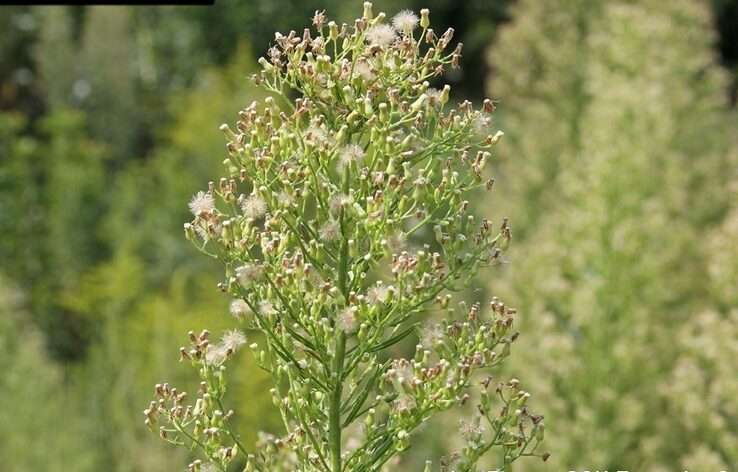
An annual weed is horseweed. It grows quickly and usually reaches a height of 60 inches in just one or two seasons. It creates long, hairy stems that are scattered with flowering branches and unstalked leaves. The leaves are narrow, with margins that are coarsely serrated, and they range in size from 1 inch to 4 inches. Along the stem, they emerge in alternating spirals.
Flowering and Fragrance
Mid-summer to early fall is when Erigeron canadensis produces a substantial cluster of blooms.
Normally, the flowering phase only lasts two to three weeks.
The flowers frequently have white or light purple florets and are bright green.
They can be seen at the branches’ tips.
Flowers are replaced by seeds with tiny bristles after the flowering period.
Wind aids in the seed transmission, enabling unrestricted plant growth.
Care

Light and Temperature
In North America, horseweed can grow practically anywhere but thrives in warm, arid climates.
When growing the plant outside, place it in full sun.
It may withstand outdoor afternoon sun exposure, especially if it is grown in a humid environment.
When planted inside, keep it away from windows that face south or west and receive a lot of afternoon sunshine.
Watering and Feeding
Occasionally water, but don’t overwater.
The plant prefers slightly drier circumstances, but it can endure drought.
No fertilizer is required.
With or without plant food, the plant will probably attain its full height in one or two years.
The plant only needs water throughout the winter when the lower leaves begin to wilt.
Planting and soil
Horseweed may grow in a range of soil types, but it prefers loamy, rich soil.
To make loamy soil, combine equal proportions of sand, clay, and organic material. You may also utilize ordinary soil that has been amended with some perlite.
There is no need to move the plant unless it starts to completely take over a garden or yard.
It can spread quickly and displace other vegetation.
To save the plant, transplant it in the spring before its summertime rapid growth starts.
Uses
Only minimal levels of essential oil are present in the plant. The oil is easily extracted from the plant, and due to its distinctive qualities, it is a fantastic choice for use in developing perfumes with complex and enticing aromas.
Edible
It is a nutritious food since it contains calcium and phosphorus.
Medicinal
A tried-and-true way for reducing rhinitis symptoms through sneezing is to crush the blooms of E. canadensis and put them up one’s nose.
This plant’s leaves are used to make a decoction used to treat diarrhea and sore throats.
Table





